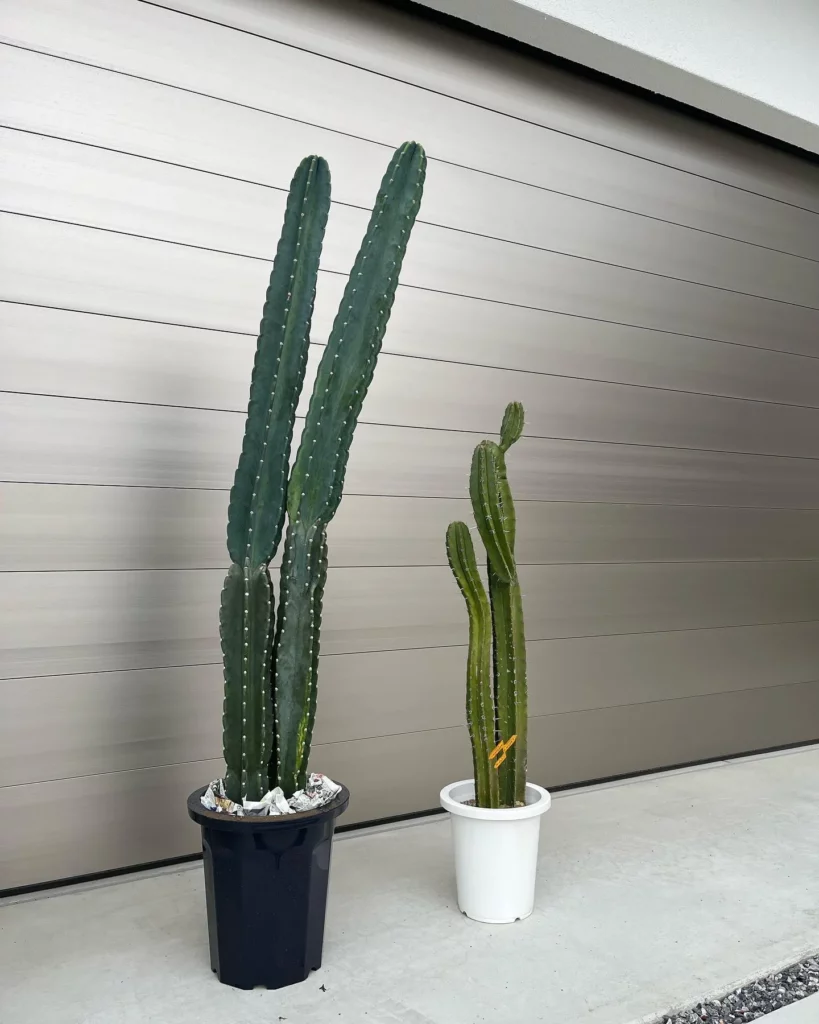The Indian Fig is a large and impressive cactus with a massive trunk that can reach up to fifteen feet tall and ten feet wide. Its pad-like leaves can either be spineless or have a few spines, adding to its unique visual appeal. During late spring to early summer, the Indian Fig blooms with vibrant cup-shaped blossoms in shades of orange or yellow, adding a burst of color to any garden. After flowering, the plant produces rounded, reddish-purple fruit that resembles a strawberry, which not only adds to its aesthetic beauty but is also edible and delicious.
Key Takeaways:
- Provide your Indian Fig with full sun and well-draining soil for optimal growth.
- Consider growing your Indian Fig in containers or as a stunning focal point in your outdoor garden.
- The fruit and pads of the Indian Fig have both culinary and medicinal uses.
Appearance of Indian Fig

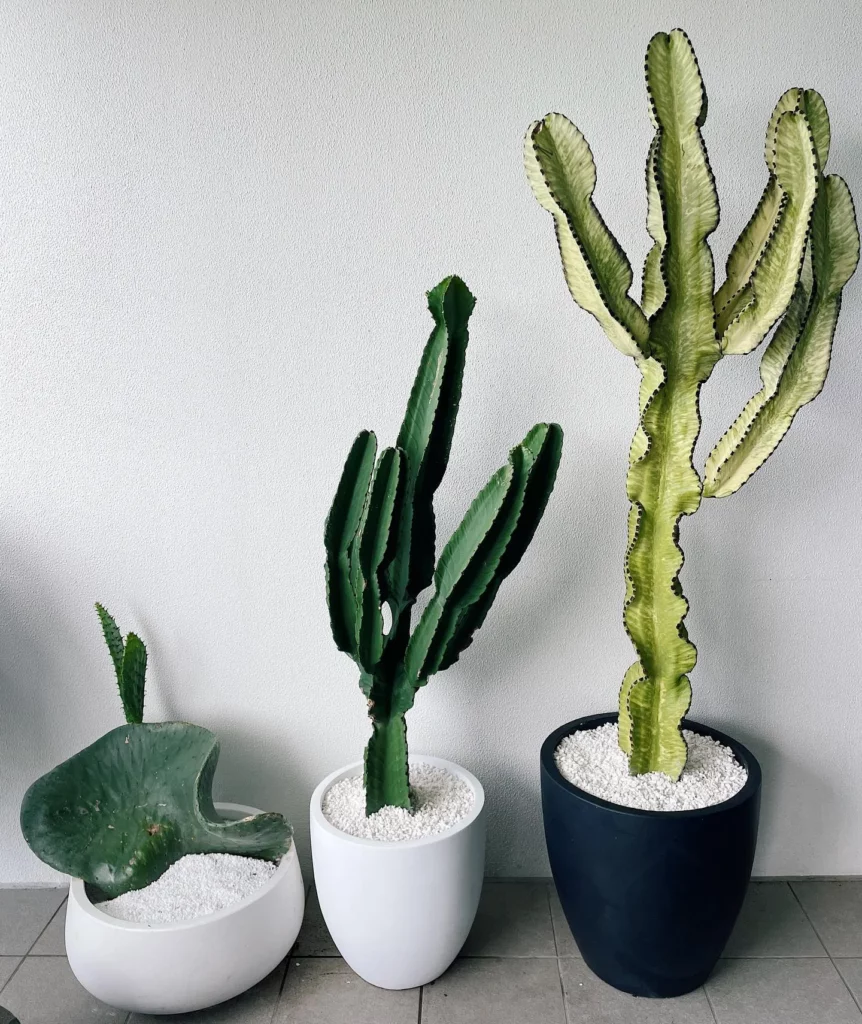
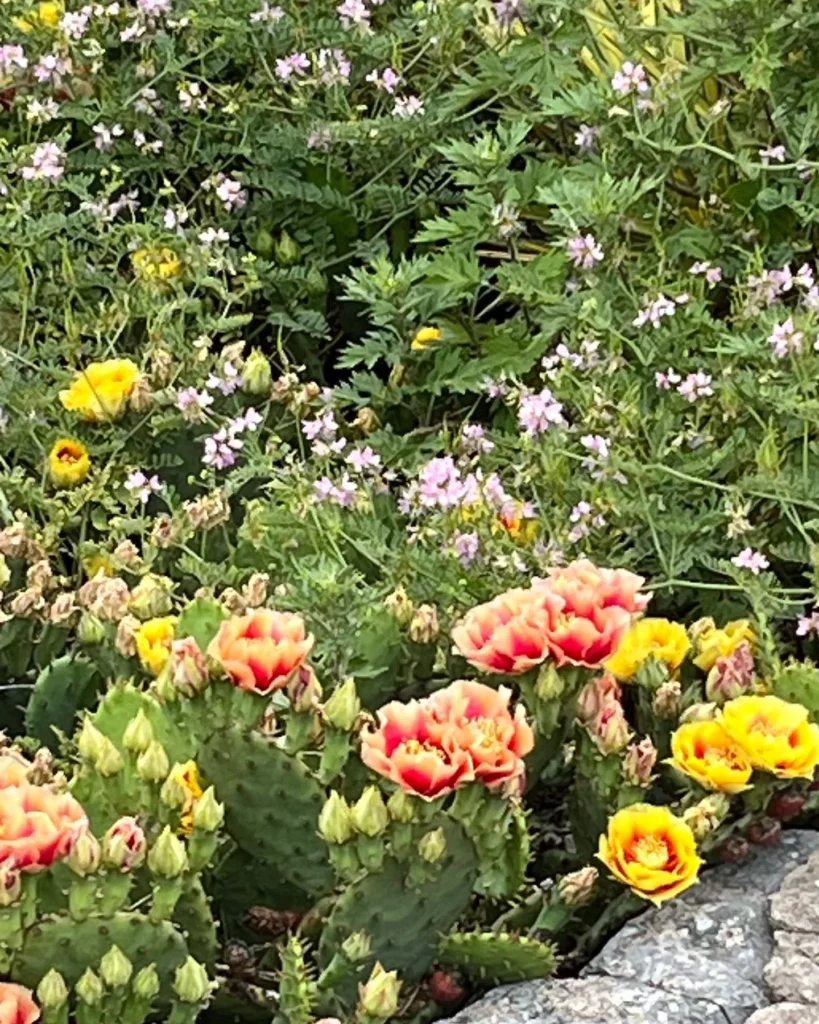
With its grand size and striking appearance, the Indian Fig makes a statement in any landscape. Its impressive height and width create a commanding presence, while its beautiful flowers and fruit add a touch of natural beauty. Whether used as a screen, fence, or barrier, the Indian Fig is sure to captivate with its unique and eye-catching appearance.
Growing Tips:
- Choose a sunny location for the Indian Fig, as it thrives in full sun and reflected heat.
- Ensure the soil is well-draining to prevent waterlogging, as this can lead to root rot.
- Consider pruning the plant as it matures to shape and thin it out, especially if it becomes top-heavy.
Light Requirements for Indian Fig

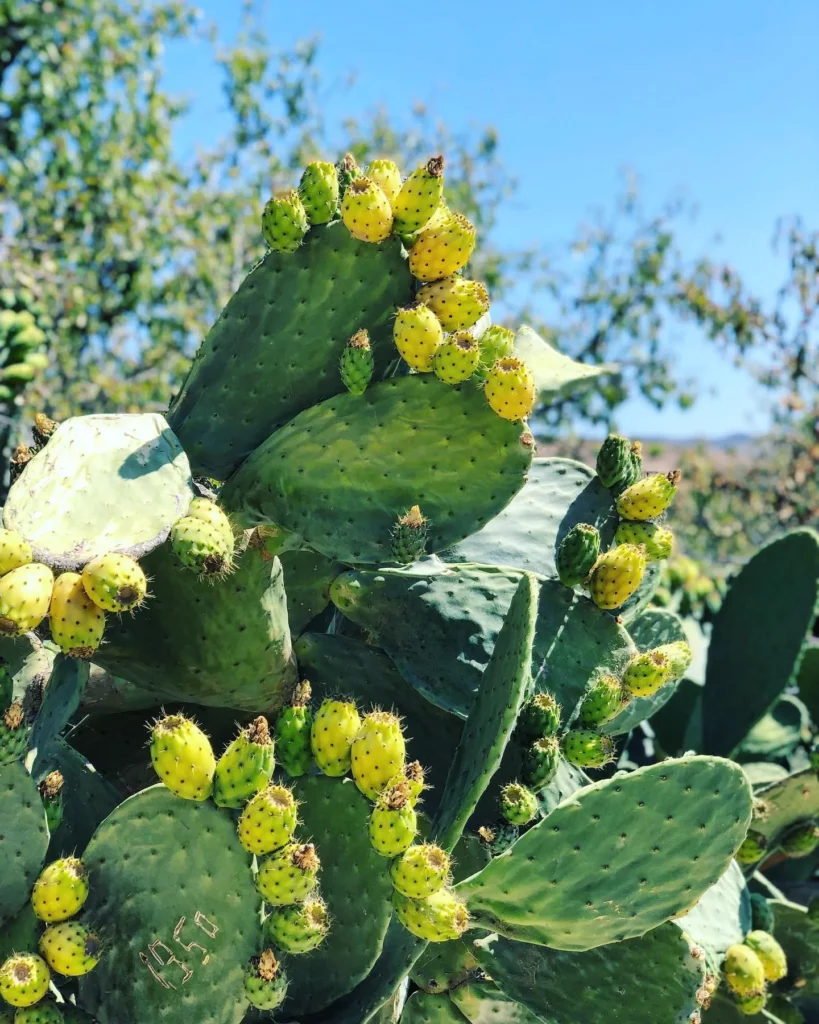

The Indian Fig plant thrives in bright and sunny conditions, making it ideal for outdoor cultivation. It requires a minimum of 80-100% sunlight exposure, so it is important to place the plant in a location where it can receive direct sunlight for most of the day. The intense sunlight and reflected heat will contribute to the plant’s overall health and growth.
If you are growing the Indian Fig indoors, it is crucial to provide sufficient light to mimic natural sunlight. Placing the plant near a south-facing window will ensure it receives the necessary amount of sunlight. You may also consider using grow lights to supplement the lighting conditions, especially during the darker winter months.
Signs of insufficient light:
- Pale or yellowish coloration of the leaves
- Stretching or elongation of the stems
- Poor growth or limited flowering
Signs of excessive light:
- Scorching or yellowing of the leaves
- Browning or crisping of the plant’s edges
- Wilting or drooping despite adequate watering
Watering Indian Fig
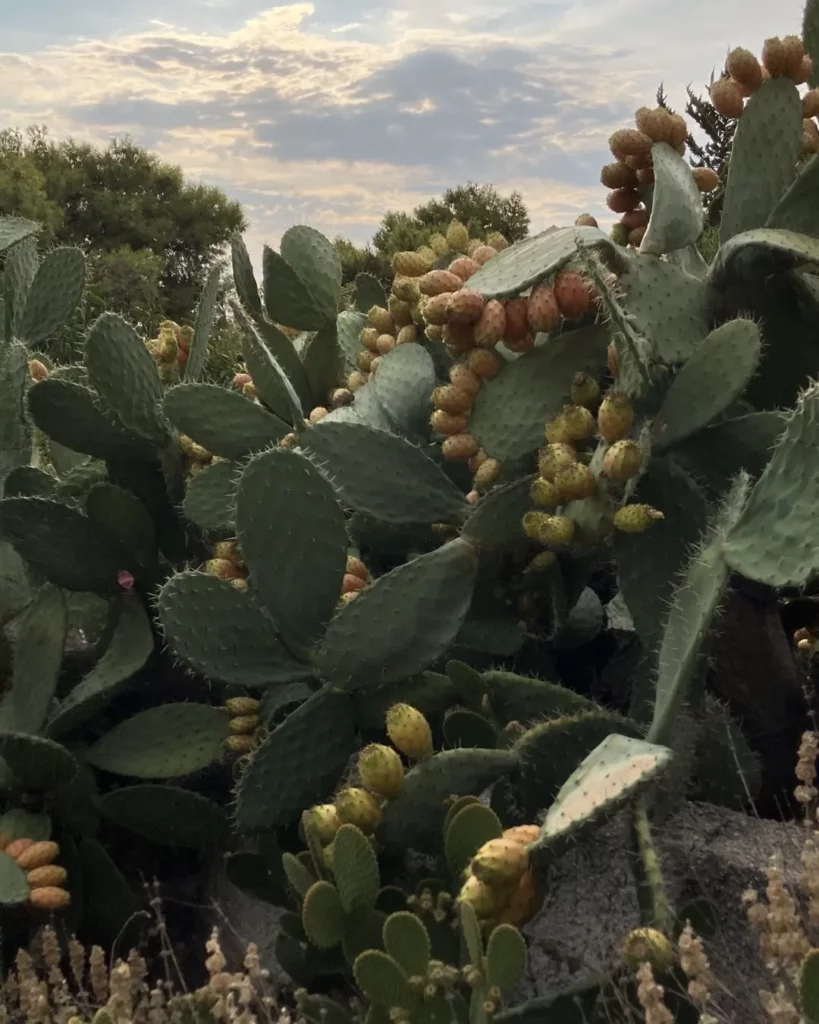

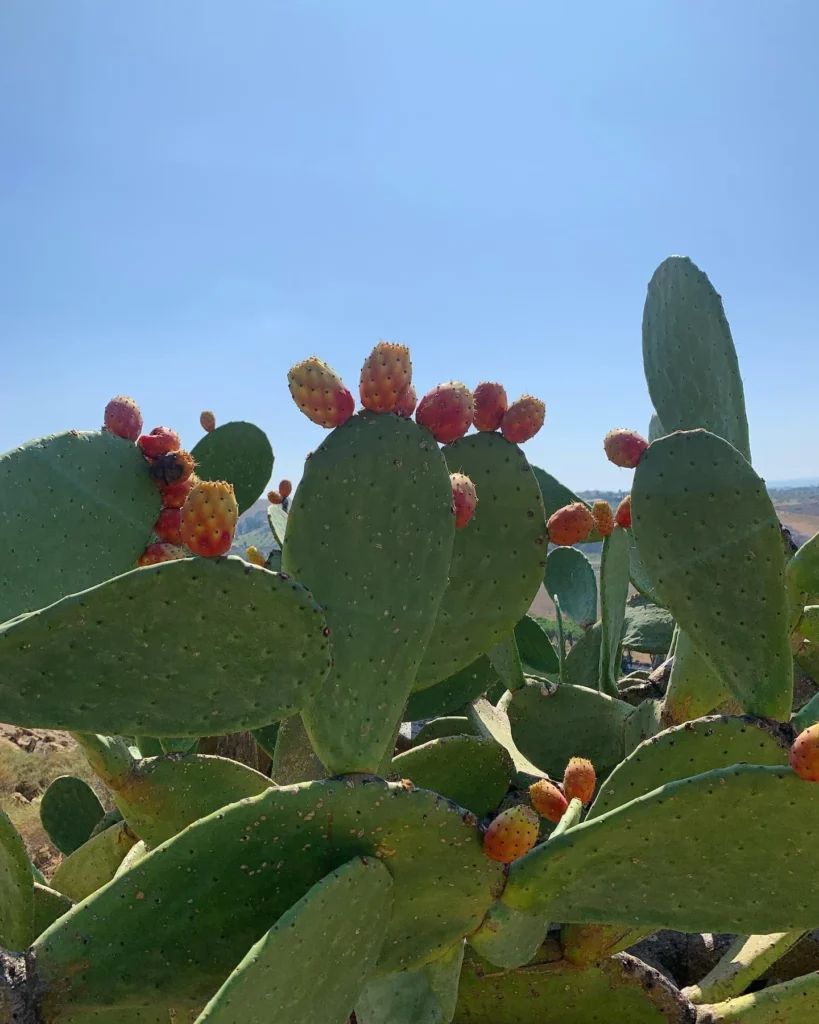
Proper watering is crucial for the health and well-being of your Indian Fig. While it is a drought-tolerant plant, it still requires occasional irrigation, especially during periods of extended dryness. However, it’s important to strike a balance and avoid over-watering, as this can lead to root rot and other issues.
When watering your Indian Fig, it is best to allow the soil to dry out between waterings. This will prevent the roots from sitting in water for extended periods, which can cause them to rot. To determine when it’s time to water, simply stick your finger about an inch into the soil. If it feels dry at that depth, it’s time to give your plant a drink.
When watering, aim to thoroughly saturate the soil. This will ensure that water reaches the roots, promoting healthy growth. However, be mindful not to leave your Indian Fig sitting in standing water, as this can also lead to root rot. If your plant is in a container, make sure it has drainage holes to allow excess water to escape.
Watering Tips:
- Water your Indian Fig sparingly but deeply, allowing the soil to dry out between waterings.
- Check the moisture level of the soil by sticking your finger about an inch into the soil.
- Thoroughly saturate the soil when watering to ensure water reaches the roots.
- Avoid over-watering and standing water, as this can cause root rot.
- If your Indian Fig is in a container, make sure it has drainage holes to prevent waterlogged soil.
Fertilizing Indian Fig
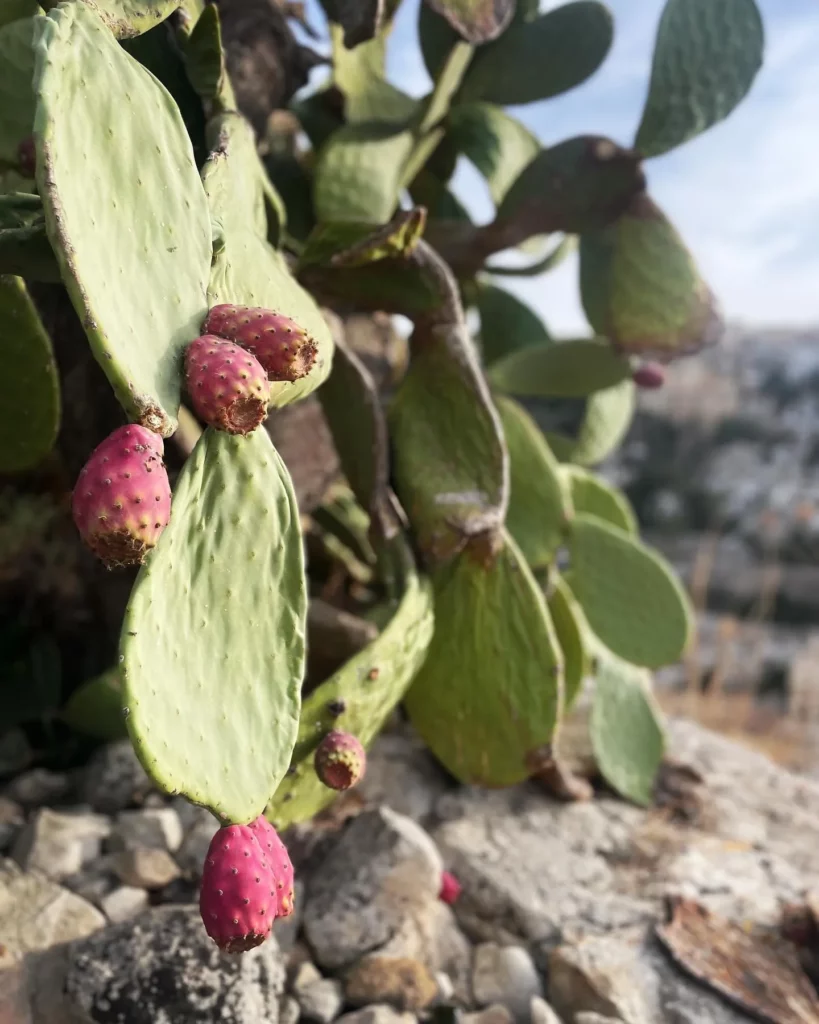
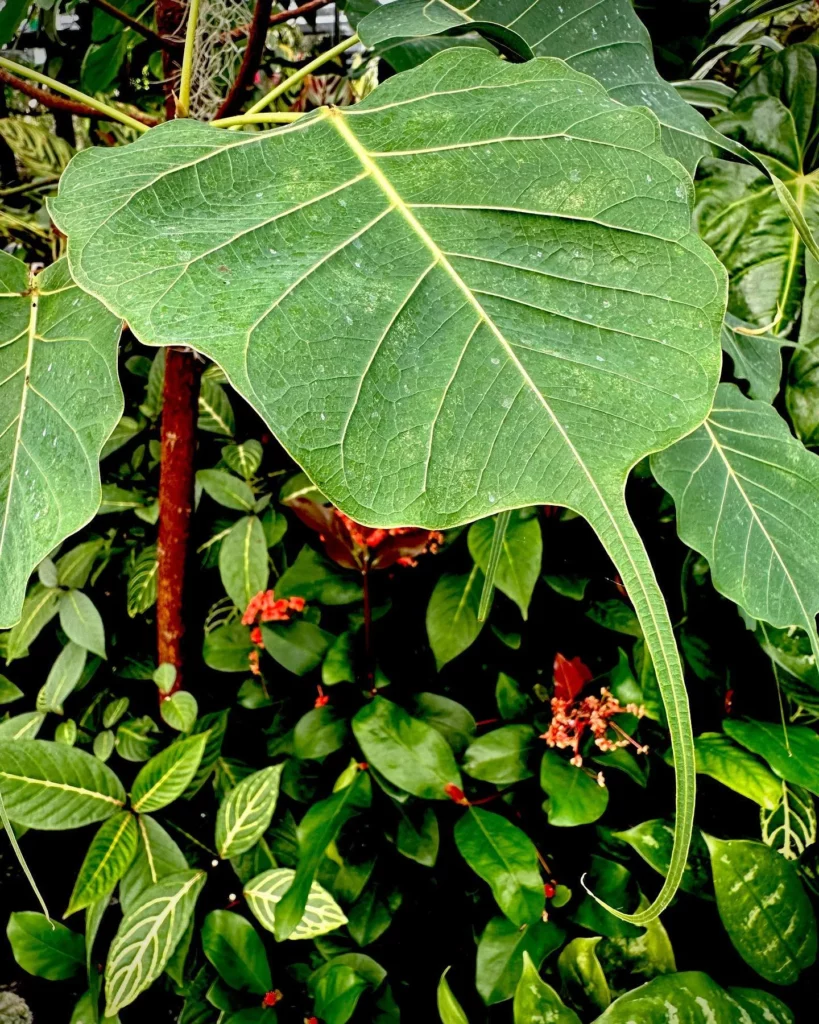
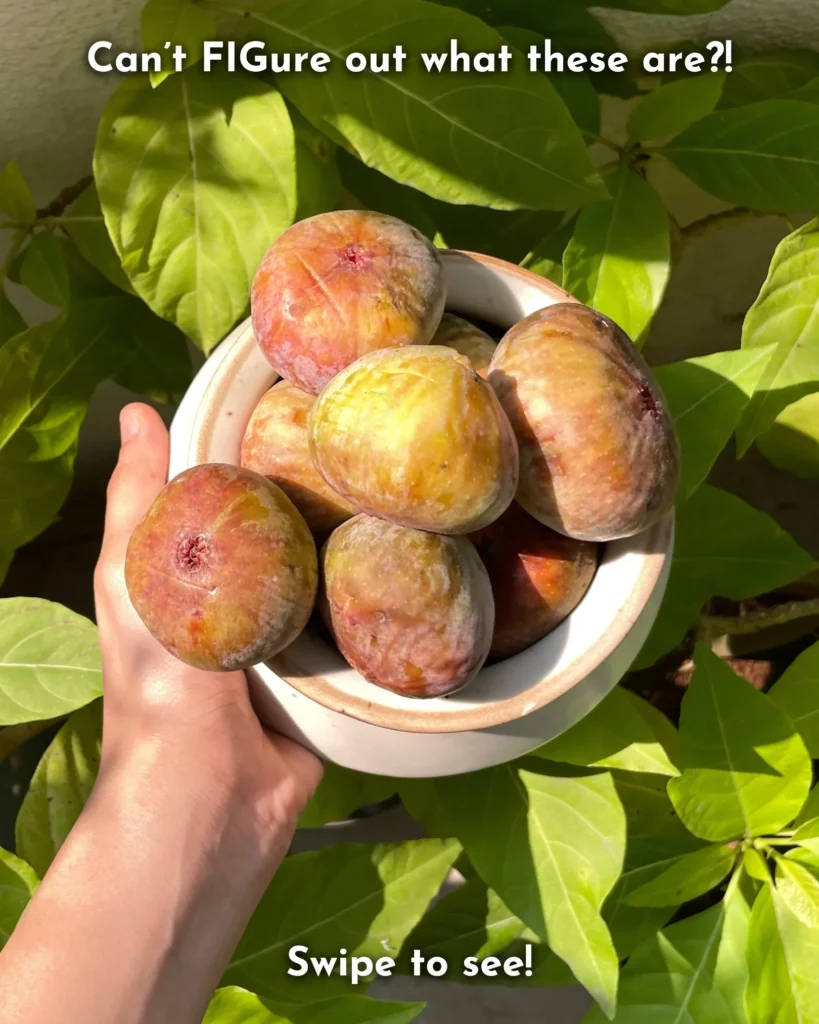
When it comes to fertilizing your Indian Fig, it’s important to follow a balanced approach. While this resilient plant doesn’t require frequent fertilization, providing it with the right nutrients can help promote healthy growth and vibrant foliage.
Choosing the Right Fertilizer
When selecting a fertilizer for your Indian Fig, opt for a slow-release formula that is specifically formulated for cacti and succulents. These fertilizers are designed to provide a steady supply of nutrients over an extended period, reducing the risk of over-fertilization. Avoid using cheaper fertilizers that may contain heavy salts, as they can damage the roots and potentially harm the plant.
Applying the Fertilizer
Apply the fertilizer to your Indian Fig tri-annually, which means fertilizing it three times a year. Begin by sprinkling the fertilizer a few inches away from the base of the plant, taking care not to let it touch the plant directly. This will allow the roots to absorb the nutrients gradually. Follow the package instructions for the specific fertilizer you are using, as the dosages may vary. Remember, it’s always better to under-fertilize than to over-fertilize, as excessive amounts can cause burns and other issues.
Potting Indian Fig
When it comes to potting an Indian Fig, it’s important to choose the right container and soil. Select a pot that has a diameter of 8-16 inches and a depth of 10 inches to provide enough space for the plant to grow. Make sure the pot has drainage holes to prevent waterlogging.
For the soil, opt for a well-draining mix specifically formulated for cacti. This type of soil will help prevent excess moisture and rot. Avoid using wet or mucky soils as they can suffocate the roots and lead to poor plant health. A good cactus potting mix is usually a blend of sand, perlite, and peat moss.
When potting your Indian Fig, gently remove the plant from its nursery container and place it in the new pot. Fill in the gaps around the roots with the cactus potting mix, ensuring that the plant is stable and upright. Avoid burying the plant too deep or keeping it too high above the soil level.
Additional Tips:
- Allow the soil to dry out between waterings, as over-watering can lead to root rot.
- Place the potted Indian Fig in a location that receives plenty of sunlight, preferably near a sunny window or on a patio.
- Consider using a decorative pot or planter to enhance the aesthetic appeal of your Indian Fig.
- During the growing season, fertilize the plant with a slow-release fertilizer specially formulated for cacti.
Propagation of Indian Fig
The Indian Fig can be propagated through stem cuttings and seeds. Propagating the plant allows you to expand your collection or share the beauty of the Indian Fig with others.
Stem Cuttings
To propagate through stem cuttings, start by selecting healthy pads from the parent plant. Use a clean, sharp knife or shears to carefully remove a section of the pad. Allow the cut end to callus over for a few days to prevent rotting. Once calloused, plant the cutting in well-draining soil, burying it about one-third of the way into the soil. Water the cutting lightly and place it in an area with bright, indirect sunlight. Keep the soil lightly moist, but avoid over-watering. With proper care, the cutting should develop roots and begin to grow within a few weeks.
Seeds
Propagation from seeds requires collecting ripe fruit from the Indian Fig. Cut open the fruit and remove the seeds. Rinse the seeds to remove any pulp or debris, then allow them to dry for a few days. Once dry, plant the seeds in a suitable growing medium, such as a cactus mix or well-draining soil. Bury the seeds about 1/4 inch deep and water lightly. Place the container in a warm location with indirect sunlight. Keep the soil slightly moist, but avoid over-watering. Germination can take several weeks to several months, so be patient. As the seedlings grow, provide them with bright, indirect sunlight to ensure healthy development.
Growth and Development of Indian Fig
The Indian Fig cactus is a plant that exhibits moderate growth and impressive development when provided with the right conditions and care. With its immense size and branching structure, the Indian Fig can reach heights up to fifteen feet and spread out up to ten feet wide. This makes it a visually striking and commanding presence in any landscape.
As the Indian Fig matures, it may become top-heavy, necessitating pruning to shape and thin out the plant. This can help maintain its aesthetic appeal and prevent any imbalances that could compromise its growth. Regular pruning also promotes airflow and reduces the risk of fungal infections, ensuring the overall health and vitality of the Indian Fig.
The Indian Fig is known to be a resilient and adaptable plant, thriving in extreme heat and drought conditions. Its ability to tolerate these harsh environments makes it an excellent choice for arid regions. With proper care, the Indian Fig can live for many years, providing beauty and greenery to its surroundings.
Growth Rate
- The Indian Fig has a moderate growth rate, developing steadily over time.
- Under optimal conditions, it can reach maturity within a few years.
- Its growth rate may vary depending on factors such as light, temperature, and humidity.
Resilience
- The Indian Fig is known for its resilience in extreme heat and drought conditions.
- It can thrive in arid regions where other plants may struggle.
- This resilience makes it a popular choice for landscapes that require low-maintenance plants.
Pruning and Maintenance
- Regular pruning is necessary to shape and thin out the Indian Fig as it matures.
- Pruning promotes airflow, reduces the risk of fungal infections, and maintains the plant’s aesthetic appeal.
- Maintenance tasks also include monitoring for pests and diseases and providing appropriate care and nutrition.
Pests and Diseases Affecting Indian Fig
While the Indian Fig is generally a hardy plant, it can still be susceptible to certain pests and diseases. Here are some common issues to watch out for:
Pests:
- Mealybugs: These small, cottony insects can infest the Indian Fig, causing damage to the plant. Regularly inspect the plant for signs of mealybugs, such as cotton-like clusters on the pads or around the base. To control the infestation, gently wipe the affected areas with a cotton swab dipped in rubbing alcohol.
- Scale Insects: These tiny, immobile pests can attach themselves to the Indian Fig’s pads and suck out sap, weakening the plant. Look for small, round bumps on the plant’s surface. To remove scale insects, gently scrape them off with a soft brush or cloth. For severe infestations, insecticidal soap or neem oil can be used with caution.
Diseases:
- Root Rot: Over-watering can lead to root rot in the Indian Fig, causing the roots to become mushy and rot away. To prevent root rot, ensure that the soil is well-draining and avoid over-watering. If root rot has already occurred, it may be necessary to repot the plant in fresh, well-draining soil and trim away any affected roots.
Culinary and Medicinal Uses of Indian Fig
The Indian Fig, also known as the Opuntia cactus, offers not only beauty but also a range of culinary and medicinal benefits. The fruit of the Indian Fig is not only visually appealing but also delicious. With its unique combination of flavors, including hints of fig, watermelon, strawberry, peach, and plum, it adds a delightful touch to various culinary preparations. You can enjoy the Indian Fig fruit in refreshing fruit salads, delectable cakes, creamy ice creams, and flavorful jams.
Additionally, the Indian Fig has been used for centuries for its medicinal properties. It has been known to help alleviate nausea, headaches, fevers, and toothaches. The plant is also believed to have digestive benefits and has been used in traditional herbal remedies. Furthermore, studies have shown that the Indian Fig may have potential in managing diabetes, making it a valuable plant for those seeking natural alternatives.
Here are some ways to incorporate the Indian Fig into your culinary and medicinal routines:
- Add sliced Indian Fig fruit to fruit salads for a burst of vibrant color and unique flavors.
- Use pureed Indian Fig fruit as a natural sweetener in cakes, adding moisture and a hint of tanginess.
- Create creamy Indian Fig ice cream by blending the fruit with your favorite dairy or non-dairy base.
- Prepare homemade Indian Fig jam by simmering the fruit with sugar and a touch of lemon juice.
- For a soothing herbal infusion, steep Indian Fig pads in hot water and enjoy as a tea.
- Consult with a healthcare professional or herbalist for guidance on using Indian Fig medicinally.
Growing Indian Fig Indoors
Indoor cultivation of the Indian Fig is a viable option for those who live in regions with colder climates or limited outdoor space. With proper care and attention, you can enjoy the beauty and benefits of this versatile plant inside your home. Here are some tips to successfully grow Indian Fig indoors:
1. Choose the right location
Place your Indian Fig near a south-facing window where it can receive ample sunlight. This cactus loves bright, direct light, so make sure it gets at least six hours of sunlight each day. If your home doesn’t have a suitable window, you can also use grow lights to supplement the required light.
2. Provide the ideal temperature
The Indian Fig thrives in warm temperatures, ideally between 70°F to 90°F (21°C to 32°C). Avoid exposing it to extreme temperature fluctuations or drafts, as they can adversely affect its growth. Keep the plant away from cold windows during winter and protect it from hot air vents during summer.
3. Water carefully
It’s crucial to strike the right balance when watering your Indian Fig. Like most cacti, it prefers infrequent but thorough watering. Allow the soil to dry out completely before watering again. Over-watering can lead to root rot, so it’s better to underwater than overwater. Always use well-draining soil and pots with drainage holes to prevent waterlogging.
4. Monitor for pests and diseases
Although the Indian Fig is relatively resistant to pests and diseases, it’s still essential to keep an eye out for any signs of trouble. Regularly inspect the plant for pests like mealybugs or scale insects. If you notice any infestation, address it promptly with organic pest control methods. Additionally, ensure good air circulation around the plant to prevent fungal diseases.
Conclusion
In summary, the Indian Fig is a versatile and resilient plant that can thrive with proper care and maintenance. Whether you choose to grow it outdoors or indoors, this cactus can bring beauty and functionality to any space.
To ensure the optimal growth of your Indian Fig, remember that it prefers full sun and well-draining soil. While it can withstand drought conditions, occasional irrigation during dry periods is important. Fertilization should be done sparingly using a slow-release fertilizer.
Whether you decide to grow the Indian Fig in containers or directly in the ground, it’s a plant that can adapt to various environments. Propagation can be done through stem cuttings or seeds, allowing you to easily expand your collection of these magnificent cacti.
Not only is the Indian Fig visually stunning, but it also offers culinary and medicinal benefits. The fruit and pads can be incorporated into various recipes, adding a unique combination of flavors. Additionally, this plant has been used in traditional medicine to treat a range of conditions.
FAQ
How tall can the Indian Fig grow?
The Indian Fig can grow up to fifteen feet tall.
What is the appearance of the Indian Fig?
The Indian Fig is an immense, branching cactus with a massive trunk. It has large, oblong pads that can be spineless or have a few spines. The cup-shaped blossoms appear in orange or yellow, followed by rounded, reddish-purple, fleshy fruit that resembles a strawberry.
What are the light requirements for the Indian Fig?
The Indian Fig thrives in full sun and requires at least 80-100% sunlight. It prefers a location with direct sunlight for most of the day.
How often should I water the Indian Fig?
The Indian Fig is a drought-tolerant plant but may require occasional irrigation during periods of drought. It is important not to over-water the plant, as this can lead to root rot. Monitor the soil moisture and water sparingly when needed.
How often should I fertilize the Indian Fig?
The Indian Fig does not require frequent fertilization. It is best to use a slow-release fertilizer tri-annually, a few inches away from the base of the plant. Avoid using cheaper fertilizers that contain heavy salts, as they can damage the roots.
Can I grow the Indian Fig in a pot?
Yes, the Indian Fig can be grown in containers. Use a pot that is large enough to accommodate the growth of the plant. Use well-draining soil specifically formulated for cacti and avoid wet or mucky soils.
How can I propagate the Indian Fig?
The Indian Fig can be propagated through stem cuttings or seeds. Take stem cuttings from healthy pads and allow them to callus over before planting in well-draining soil. Seeds can be collected from the fruit and planted in a suitable growing medium.
How big can the Indian Fig grow?
With proper care, the Indian Fig can grow up to fifteen feet tall and ten feet wide.
What pests and diseases affect the Indian Fig?
The Indian Fig is generally a hardy plant but can be affected by pests such as mealybugs and scale insects. Regular inspection and appropriate treatment can help control these pests. Over-watering can lead to fungal diseases such as root rot.
What are the culinary and medicinal uses of the Indian Fig?
The fruit of the Indian Fig is edible and can be used in various culinary preparations such as salads, cakes, and jams. The pads can also be used in soups, sauces, and salads. The Indian Fig has been traditionally used in herbal medications for its healing properties, including treating nausea, headaches, fevers, and digestive problems.
Can I grow the Indian Fig indoors?
Yes, the Indian Fig can be grown indoors in containers. Provide sufficient sunlight and warmth, and regularly inspect the plant for any signs of pests or diseases.

